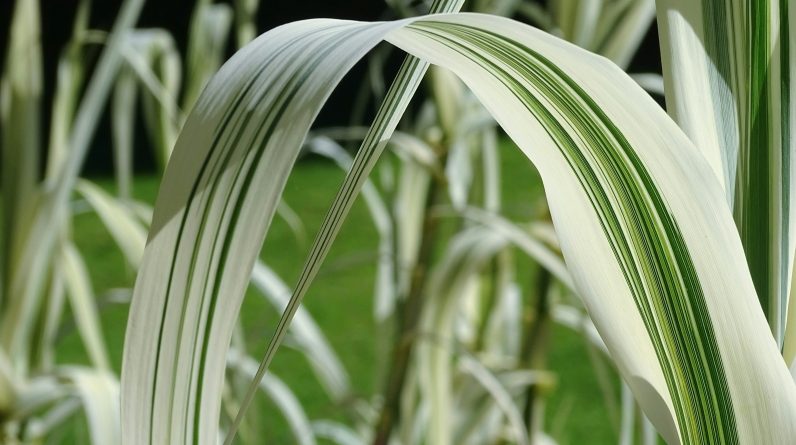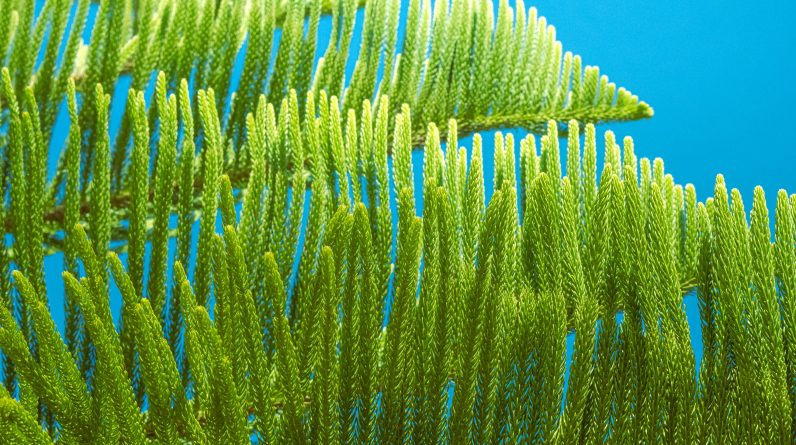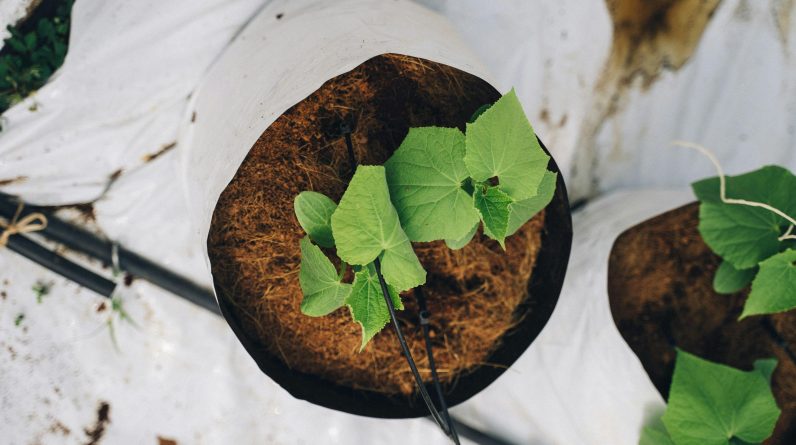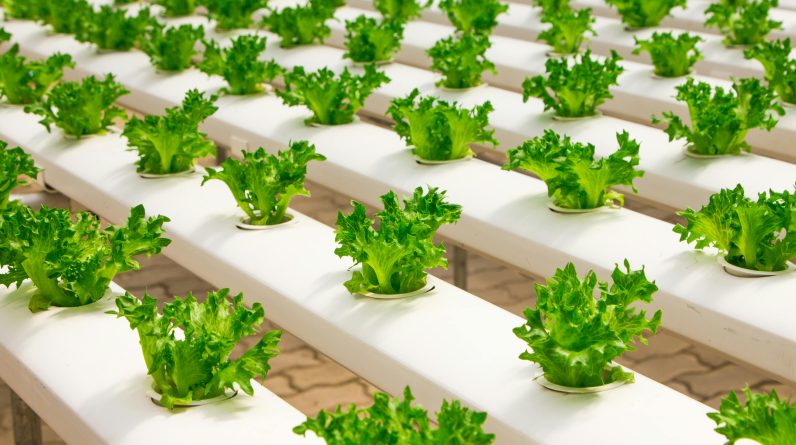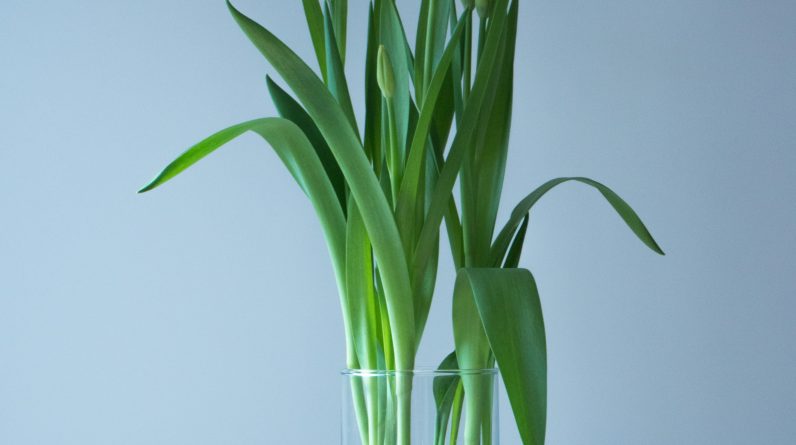
Are you interested in sustainable gardening practices? Look no further than hydroponic growing systems! These innovative systems allow plants to thrive without the need for soil, conserving water and minimizing the use of harmful chemicals. In this article, we will explore the eco-friendly practices that make hydroponic growing systems a sustainable choice for gardeners. From efficient water usage to reducing waste, you’ll discover how these systems are transforming the way we grow our food while protecting the environment. So, join us on this green journey as we delve into the world of hydroponics and uncover its sustainable potential.
Benefits of Hydroponic Growing Systems
Hydroponic growing systems offer several advantages over traditional soil-based agriculture. By providing an optimal environment for plants to thrive, these systems maximize efficiency and sustainability. Here are some of the key benefits of hydroponic growing systems:
Reduced water usage
One of the most significant advantages of hydroponics is its water efficiency. Traditional soil-based farming methods often result in significant water waste due to evaporation and inefficient irrigation systems. In contrast, hydroponic systems use a recirculating system that enables water to be recycled and reused. This reduces water consumption by up to 90% compared to traditional farming methods, making hydroponics a sustainable solution for areas experiencing water scarcity.
Minimized pesticide use
Hydroponic growing systems minimize the need for chemical pesticides. Since plants are grown in a controlled indoor environment, pests like insects and diseases are less likely to infest crops. Additionally, hydroponic systems can incorporate integrated pest management techniques, such as introducing beneficial insects or using botanical extracts, to effectively control pests without harmful chemicals. By reducing pesticide use, hydroponics promotes healthier and safer food production.
Year-round production
Hydroponic growing systems allow for year-round production regardless of external climate conditions. With the ability to control temperature, humidity, and lighting, growers can create an ideal environment for plant growth at any time of the year. This consistent, uninterrupted production enables farmers to meet the increasing demand for fresh produce throughout the year, contributing to food security and reducing the reliance on seasonal crops.
Greater control over nutrient levels
In hydroponics, growers have precise control over nutrient levels, ensuring that plants receive the optimal amount of essential elements for growth. By providing a nutrient solution directly to the plant roots, hydroponic systems bypass the limitations of soil quality and nutrient availability. This level of control helps plants grow faster and healthier, resulting in higher-quality and more nutritious crops.
Higher crop yields
Hydroponic growing systems are known for their ability to produce higher crop yields compared to traditional farming methods. The controlled environment allows plants to grow faster and produce more, maximizing space utilization and reducing waste. Moreover, the absence of weeds in hydroponics eliminates competition for resources, further enhancing crop yields. This increased productivity makes hydroponic systems an efficient and sustainable solution to meet the growing demand for food worldwide.
Key Components of Sustainable Hydroponics
To ensure the sustainability of hydroponic growing systems, several key components must be considered. By incorporating energy-efficient lighting, water conservation techniques, recycling and reusing nutrient solutions, avoiding chemical pesticides, and using organic and sustainable growing media, growers can minimize their environmental impact and operate in a sustainable manner.
Energy-efficient lighting
In hydroponics, lighting plays a crucial role in promoting plant growth. Energy-efficient LED grow lights are commonly used due to their low energy consumption and long lifespan. These lights provide the necessary spectrum and intensity for optimal plant photosynthesis while minimizing energy waste. By investing in energy-efficient lighting, growers can significantly reduce their energy consumption and carbon footprint while maintaining high crop productivity.

Water conservation techniques
Water conservation is vital for sustainable hydroponic systems. Drip irrigation systems, which deliver water directly to plant roots, minimize water waste by providing water precisely where it is needed. Recirculating systems collect and reuse excess water, preventing unnecessary drainage and preserving water resources. Additionally, capturing and reusing condensed moisture or managing evaporation and transpiration can further enhance water conservation efforts.
Recycling and reusing nutrient solutions
To maintain nutrient balance and minimize waste, hydroponic growers can implement recycling and reusing practices for nutrient solutions. Monitoring and adjusting nutrient levels regularly ensure that plants receive optimal nutrition while preventing excess nutrients from being discarded. Proper disposal techniques for excess nutrients, such as controlled filtration or biological treatments, help minimize environmental contamination. By reusing nutrient solutions, growers can reduce their reliance on synthetic fertilizers and contribute to a more sustainable growing system.
Avoiding chemical pesticides
In sustainable hydroponic systems, chemical pesticides should be avoided whenever possible. Integrated pest management (IPM) techniques can be employed, such as the introduction of beneficial insects or the use of botanical extracts, to control pests without resorting to harmful chemicals. Additionally, companion planting, which involves growing pest-repellent plants alongside crops, can help deter pests naturally. By prioritizing biological controls and sustainable pest management practices, growers can minimize the use of chemical pesticides and protect the environment and human health.
Using organic and sustainable growing media
Choosing the right growing media is essential for sustainable hydroponics. Organic and sustainable options such as coconut coir, rockwool, perlite, vermiculite, and peat moss alternatives provide a suitable substrate for plants without depleting natural resources. These materials promote healthy plant growth while reducing environmental impact. Additionally, utilizing recycled and composted materials as growing media further enhances the sustainability of hydroponic systems by reducing waste and promoting circular economy practices.
Energy-efficient Lighting in Hydroponics
Proper lighting is crucial for successful hydroponic cultivation. By utilizing energy-efficient lighting technologies, growers can minimize energy consumption while maximizing plant growth and productivity.
LED grow lights
LED (Light Emitting Diode) grow lights are the preferred choice for energy-efficient lighting in hydroponics. LED technology offers several advantages, including low energy consumption, long operational lifespan, and a customizable spectrum tailored to a plant’s specific growth needs. LED grow lights can provide the right combination of red, blue, and sometimes white light to optimize photosynthesis and promote healthy plant growth. Compared to other lighting options, LED grow lights consume significantly less energy and emit less heat, making them a sustainable choice for indoor hydroponic systems.
Light intensity and duration optimization
In hydroponics, achieving the correct light intensity and duration is crucial for plant growth. By optimizing light settings, growers can tailor lighting conditions to the specific needs of different plant species and growth stages. Providing the right amount of light intensity promotes photosynthesis and enhances plant development, while controlling the duration of light exposure avoids unnecessary energy consumption. By carefully managing light intensity and duration, growers can achieve maximum energy efficiency and optimize plant growth.
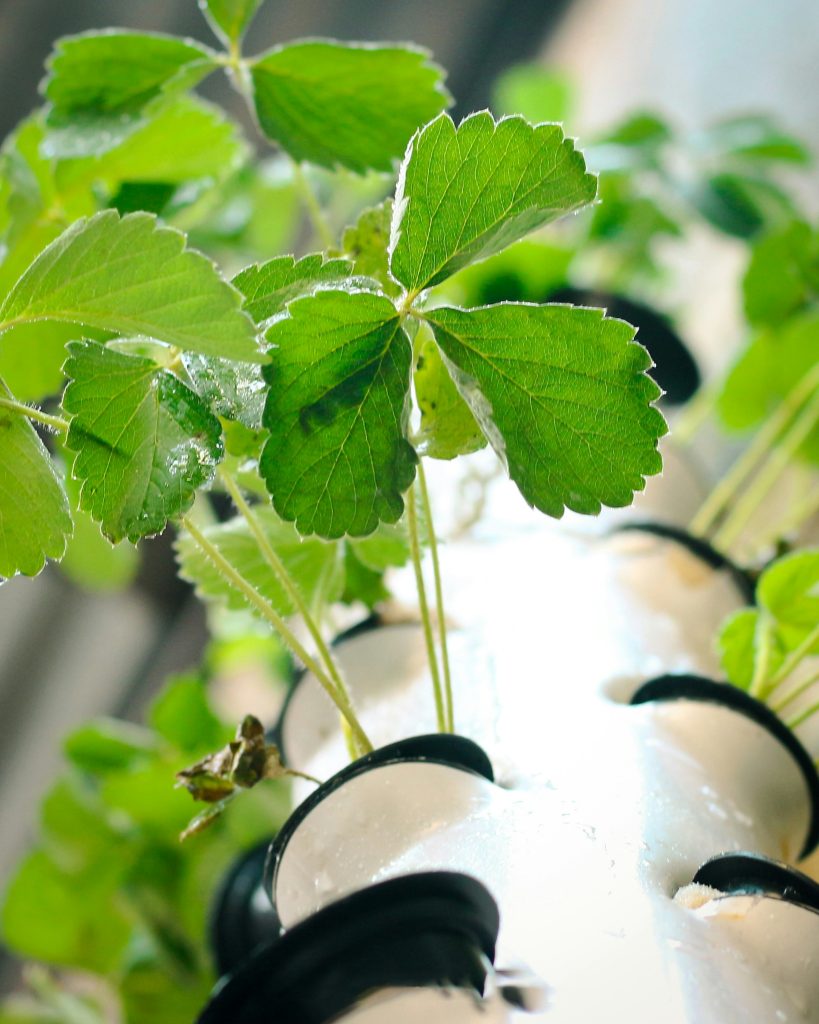
Light spectrum customization
Different plant species have varying light requirements depending on their growth stage. Customizing the light spectrum allows growers to provide the appropriate wavelengths for each stage of plant development. Red light promotes flowering and fruiting, while blue light stimulates vegetative growth. White light, which contains a broad spectrum, can be used during certain growth stages to mimic natural sunlight. By tailoring the light spectrum to the specific needs of plants, growers can maximize energy efficiency and achieve optimal growth and yield.
Water Conservation Techniques in Hydroponics
Water conservation is a crucial aspect of sustainable hydroponic systems. By implementing water-saving techniques, growers can maximize efficiency and minimize water waste.
Drip irrigation systems
Drip irrigation is an efficient water delivery method that ensures water reaches plant roots directly, minimizing waste through evaporation or runoff. In hydroponics, drip emitters or micro-tubing with small holes are used to provide a slow and steady water supply to each plant. This precise irrigation technique allows growers to deliver water and nutrients directly to the root zone, reducing water usage while ensuring plants receive the necessary hydration for optimal growth.
Recirculating systems
Recirculating systems are designed to collect and reuse water, minimizing water waste and preserving valuable resources. In these systems, excess water and nutrients are collected, filtered, and recirculated back to plants. By continuously reusing the same water, growers can significantly reduce their water consumption. Additionally, recirculating systems help maintain nutrient balance, as excess nutrients can be adjusted and reused, minimizing environmental contamination.
Collecting and reusing condensation
Water condensation can be collected within hydroponic growing environments and reused in a closed-loop system. By capturing the moisture that naturally accumulates in the grow space, growers can supplement their water supply without relying solely on external water sources. This technique is particularly effective in humid climates or in climates with significant temperature variations. Reusing condensation helps further reduce water usage and promotes sustainability within hydroponic growing systems.
Managing evaporation and transpiration
Controlling evaporation and transpiration is essential to prevent unnecessary water loss in hydroponics. By implementing measures to reduce evaporation, such as covering reservoirs and minimizing exposed water surfaces, growers can conserve water and limit moisture loss. Additionally, managing transpiration by regulating temperature, humidity, and airflow within the growing environment helps prevent excessive water usage. Balancing these factors allows plants to maintain optimal water uptake without wasting water through excessive evaporation or transpiration.
Recycling and Reusing Nutrient Solutions
In sustainable hydroponic systems, recycling and reusing nutrient solutions are critical for maintaining nutrient balance and minimizing waste.
Monitoring and adjusting nutrient levels
Regular monitoring and adjusting of nutrient levels are essential to ensure plants receive the optimal amount of nutrients for healthy growth. By regularly testing nutrient solution parameters such as pH, Electrical Conductivity (EC), and nutrient concentration, growers can identify any imbalances or deficiencies. Adjustments can be made by adding or diluting specific nutrients as needed. Proper monitoring and adjustment of nutrient levels help prevent nutrient waste and maintain a sustainable hydroponic system.

Proper disposal of excess nutrients
Managing excess nutrients is crucial for preventing environmental contamination. In hydroponic systems, excess nutrient solution can be controlled and disposed of properly to minimize its impact on the surrounding ecosystem. Various methods can be employed, such as controlled filtration or biological treatments, to remove or break down excess nutrients before disposal. By ensuring the responsible disposal of excess nutrients, growers can protect water quality and promote environmentally sustainable practices.
Reusing nutrient solutions
Reusing nutrient solutions promotes sustainability in hydroponic systems by minimizing the need for synthetic fertilizers and reducing nutrient waste. After monitoring and adjusting nutrient levels, nutrient solutions can be reused multiple times before being replaced. By recirculating nutrient solutions within a closed-loop system, growers can maintain nutrient balance while minimizing resource consumption. This practice not only reduces environmental impact but also contributes to cost savings for growers.
Avoiding Chemical Pesticides in Hydroponics
Sustainable hydroponic growing systems prioritize the use of alternative pest management strategies that minimize or eliminate the need for chemical pesticides. By adopting integrated pest management techniques and natural pest controls, growers can cultivate healthy crops while protecting the environment and human health.
Integrated pest management
Integrated Pest Management (IPM) involves a multifaceted approach to pest control that combines biological, cultural, and chemical methods. By integrating pest monitoring, prevention, and intervention strategies, growers can minimize pest populations while minimizing pesticide use. Regular scouting and monitoring of plants for pest populations, utilizing physical barriers, and implementing cultural practices that discourage pest infestations are all components of an effective IPM program. The goal is to promote a balanced ecosystem where beneficial insects and natural predators help manage pest populations, reducing reliance on chemical pesticides.
Biological controls
Biological controls involve using beneficial organisms to manage pest populations in hydroponic systems. These organisms include predatory insects, mites, nematodes, and microorganisms that prey on or parasitize pests. For example, ladybugs can be introduced to control aphid populations, while beneficial nematodes can target harmful soil-dwelling pests. By implementing biological controls, growers can maintain pest populations at manageable levels without the need for chemical pesticides, reducing potential harm to the environment and human health.
Beneficial insects
Beneficial insects play a vital role in sustainable pest management in hydroponics. These insects, such as ladybugs, lacewings, and predatory mites, feed on or parasitize pests, helping to control their populations naturally. By introducing these beneficial insects into the growing environment, growers can create a balanced ecosystem where pests are kept in check without the use of chemical pesticides. Incorporating beneficial insects as part of an IPM program is an eco-friendly and effective method for pest control in hydroponics.
Companion planting
Companion planting involves growing pest-repellent plants alongside crops to deter pests naturally. Certain plant species release compounds that repel or confuse pests, reducing the likelihood of infestations. For example, planting aromatic herbs like basil or marigolds among vegetable crops can help repel pests. The strong scents and natural compounds emitted by these companion plants act as a natural deterrent, reducing the reliance on chemical pesticides. By strategically planning companion planting, growers can create a more sustainable growing environment that minimizes pest problems without harming the ecosystem.

Use of botanical extracts
Botanical extracts derived from plants have been used as natural alternatives to chemical pesticides. Compounds found in certain plants, such as neem or pyrethrum, have insecticidal properties that can effectively control pests. By utilizing these botanical extracts in hydroponic systems, growers can eliminate or reduce the need for chemical pesticides while maintaining control over pest populations. These natural alternatives are safe for the environment and can be a valuable tool in sustainable pest management.
Using Organic and Sustainable Growing Media
The choice of growing media is an important consideration for sustainable hydroponic systems. By using organic and sustainable options, growers can minimize their environmental impact while promoting healthy plant growth.
Coconut coir
Coconut coir, also known as coconut fiber, is a popular growing medium in hydroponics. It is derived from the outer husk of coconuts and serves as an excellent substitute for traditional soil. Coconut coir provides good moisture retention, aeration, and nutrient-holding capacity without depleting peat bogs or causing environmental damage. It is a renewable and sustainable alternative that promotes plant growth while minimizing the ecological footprint of hydroponic systems.
Rockwool
Rockwool, or mineral wool, is another widely used growing medium in hydroponics. It is made from molten basalt rock or slag, spun into fibers, and formed into cubes or slabs. Rockwool offers excellent water retention, root support, and aeration properties. It is sterile and inert, making it resistant to disease and pests. Although the production of rockwool consumes energy and resources, it can be recycled and reused, making it a sustainable choice for hydroponic cultivation.
Perlite and vermiculite
Perlite and vermiculite are lightweight, mineral-based growing media commonly used in hydroponics. Perlite is volcanic glass that has been rapidly heated, causing it to expand and form lightweight granules. Vermiculite is a natural mineral that is heated to produce a lightweight, absorbent material. Both perlite and vermiculite provide good aeration and water retention properties, helping plants thrive in hydroponic systems. These materials, when sourced sustainably, can be reused and recycled, contributing to the overall sustainability of the hydroponic industry.
Peat moss alternatives
Peat moss has been a popular growing medium due to its water-holding capacity and ability to promote root development. However, the extraction of peat moss from sensitive ecosystems raises environmental concerns. Therefore, sustainable hydroponic systems prioritize peat moss alternatives. Coconut coir, rockwool, and other sustainable options mentioned earlier can serve as effective substitutes, providing similar benefits for plant growth without depleting important natural resources.
Recycled and composted materials
In line with circular economy principles, utilizing recycled and composted materials as growing media helps reduce waste and promote sustainability in hydroponic systems. For example, recycled paper, cardboard, or wood products can be processed into a suitable growing medium, providing a cost-effective and environmentally friendly alternative. Composted organic materials, such as composted plant residues or food waste, can also serve as nutrient-rich substrates while reducing the need for synthetic fertilizers. By embracing these circular practices, hydroponic growers can contribute to a more environmentally sustainable future.
Sustainability Challenges and Solutions
While hydroponic growing systems offer numerous sustainability benefits, there are challenges that must be addressed to further improve their environmental impact. By implementing appropriate solutions, hydroponic growers can minimize their carbon footprint and achieve even greater sustainability.

Energy usage and carbon footprint
Hydroponic systems rely on artificial lighting, which can contribute to high energy consumption and carbon emissions if not properly managed. To address this challenge, growers can utilize energy-efficient LED lighting, optimize light intensity and duration, and incorporate renewable energy sources. By reducing energy usage and carbon emissions, hydroponic systems can become even more sustainable and environmentally friendly.
Disposal of non-recyclable materials
Certain materials used in hydroponic systems, such as plastic containers or growing media, may not be easily recyclable or biodegradable. To tackle this challenge, growers can explore alternative materials that are more eco-friendly or consider implementing recycling programs for non-recyclable elements. By minimizing waste and promoting responsible material disposal, hydroponic systems can contribute to a circular economy and minimize their environmental impact.
Monitoring and maintaining nutrient balance
Maintaining nutrient balance is crucial for plant health and optimal crop production in hydroponic systems. However, the overuse or imbalance of nutrients can lead to environmental contamination and eutrophication of water bodies. To overcome this challenge, growers must implement stringent nutrient monitoring practices and adjust nutrient solutions as needed. Proper nutrient management ensures plants receive what they require while minimizing excess or waste that can harm the environment.
Managing pests and diseases without chemicals
While hydroponic systems offer a controlled environment that reduces the risk of pest and disease infestations, challenges can still arise. To address this, growers can implement integrated pest management strategies, utilize beneficial insects and natural predators, and explore advanced technologies for disease detection and prevention. By minimizing the use of chemical pesticides, hydroponic systems can protect human health, maintain ecological balance, and ensure sustainable crop production.
Education and outreach for sustainable practices
Promoting sustainable practices within the hydroponic industry requires education and outreach efforts. By providing resources, training programs, and information to growers, researchers, and stakeholders, the adoption of sustainable practices can be encouraged and supported. Collaborative initiatives, partnerships, and industry-wide guidelines can help raise awareness and facilitate the exchange of knowledge, ultimately fostering a culture of sustainability within the hydroponic community.
Success Stories in Sustainable Hydroponics
Numerous success stories illustrate the potential of sustainable hydroponics as a viable and eco-friendly solution for food production. These initiatives showcase innovative approaches and demonstrate the positive environmental and social impacts of adopting sustainable hydroponic systems.
Vertical farming initiatives
Vertical farming involves cultivating crops in vertically stacked layers, using advanced hydroponic systems and energy-efficient LED lighting. This approach maximizes space utilization and promotes year-round production in urban areas with limited land availability. Vertical farms reduce the need for long-distance transportation of fresh produce, minimizing carbon emissions associated with food distribution. By bringing food production closer to consumers, vertical farming initiatives contribute to local food security, reduce water usage, and promote sustainable urban agriculture.
Closed-loop systems
Closed-loop hydroponic systems are designed to minimize waste by recycling and reusing resources within the system. These systems collect and reuse nutrient solution, capture and reuse water, and focus on efficient energy usage. Closed-loop systems contribute to the circular economy by minimizing resource consumption and reducing environmental impact. By adopting closed-loop practices, hydroponic growers can significantly enhance the sustainability of their operations.
Community-based hydroponics projects
Community-based hydroponics projects empower local communities by enabling them to produce their own food sustainably. These initiatives often focus on disadvantaged areas with limited access to fresh produce. By providing training, resources, and support, community members can learn how to set up and maintain hydroponic systems to grow their own nutritious food. These projects promote food security, environmental sustainability, and community empowerment, fostering a sense of self-sufficiency and resilience.
Corporate sustainability efforts
Large-scale corporations have recognized the environmental and economic benefits of adopting sustainable hydroponic practices. Some corporations have integrated hydroponic systems into their operations to supply fresh produce for their employees or local communities. By investing in sustainable hydroponics, these companies reduce their ecological footprint, contribute to local food systems, and demonstrate their commitment to environmental stewardship. These corporate sustainability efforts serve as models for others, inspiring the widespread adoption of sustainable hydroponics.
Innovative research and development
Ongoing research and development in the field of hydroponics continuously push the boundaries of sustainable practices. Scientists and researchers are exploring innovative technologies, such as advanced sensors for nutrient monitoring, automation and artificial intelligence for system control, and alternative energy sources for powering hydroponic systems. Through these advancements, sustainable hydroponics can become more efficient, cost-effective, and environmentally friendly. Research and development efforts lay the foundation for future innovations and drive the adoption of sustainable practices within the hydroponic industry.
Future Perspectives and Potential Innovations
As hydroponics continues to gain popularity as a sustainable growing method, the future holds great potential for further advancements and innovations. Here are some future perspectives and potential innovations in the field of hydroponics:
Advancements in energy-efficient lighting
Ongoing research in lighting technology is expected to lead to even more energy-efficient lighting options for hydroponic systems. Advancements in LED technology, including improved spectrum customization and energy efficiency, will enable growers to achieve optimal plant growth while minimizing energy consumption. These developments will contribute to the sustainability of hydroponics by reducing energy usage and associated carbon emissions.
Smart irrigation and nutrient delivery systems
The integration of smart technologies, such as sensors and automation, will revolutionize hydroponic irrigation and nutrient delivery systems. Smart systems can monitor plant needs in real-time and provide precise amounts of water and nutrients, optimizing resource usage and maximizing plant health. By reducing water and nutrient waste, smart irrigation and nutrient delivery systems will further enhance the sustainability and efficiency of hydroponic growing systems.
Integration of renewable energy sources
The integration of renewable energy sources, such as solar or wind power, will help reduce the carbon footprint of hydroponic systems. Solar panels and wind turbines can generate clean and renewable energy to power lighting, pumps, and other electrical components. By utilizing renewable energy sources, hydroponic growers can minimize their reliance on fossil fuels and achieve a more sustainable energy balance.
Optimization of plant nutrition through technology
Advancements in nutrient monitoring and analysis technologies will allow for precise and real-time control over plant nutrition. By utilizing sensors and data analysis, growers can fine-tune nutrient concentrations, ratios, and delivery schedules to meet the specific needs of different plant species and growth stages. These advancements will optimize nutrient uptake and utilization, maximizing plant health and crop productivity while minimizing nutrient waste.
Emerging sustainable growing media alternatives
Research and development efforts are focused on finding sustainable alternatives to traditional growing media. The search for new materials that are renewable, biodegradable, and promote healthy plant growth continues. Innovations in sustainable growing media may include novel substrates derived from agricultural by-products, organic waste, or alternative materials with desirable properties. These emerging alternatives will further enhance the sustainability of hydroponic growing systems.
In conclusion, hydroponic growing systems offer numerous benefits and opportunities for sustainable agriculture. By incorporating energy-efficient lighting, water conservation techniques, recycling and reusing nutrient solutions, avoiding chemical pesticides, and using organic and sustainable growing media, growers can maximize efficiency while minimizing their environmental impact. With ongoing research and innovation, the future of hydroponic farming looks promising, with further advancements in energy efficiency, automation, and the integration of renewable energy sources. By embracing sustainable practices, hydroponic growers can contribute to a more resilient and ecologically friendly food production system.


